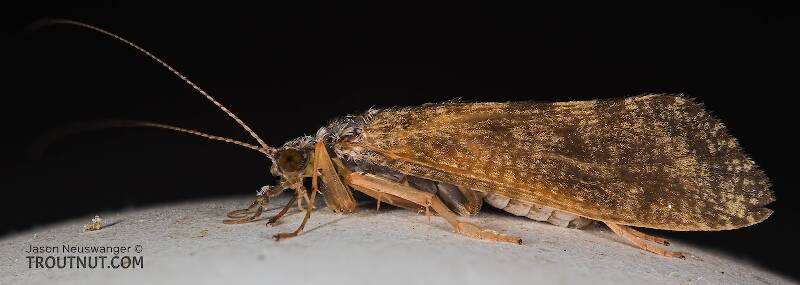
Blue-winged Olives
Baetis
Tiny Baetis mayflies are perhaps the most commonly encountered and imitated by anglers on all American trout streams due to their great abundance, widespread distribution, and trout-friendly emergence habits.


Stonefly Species Sierracapnia barberi (Little Snowflies)
Species Range
Physical description
Most physical descriptions on Troutnut are direct or slightly edited quotes from the original scientific sources describing or updating the species, although there may be errors in copying them to this website. Such descriptions aren't always definitive, because species often turn out to be more variable than the original describers observed. In some cases, only a single specimen was described! However, they are useful starting points.
Description from GBIFthe Global Biodiversity Information Facility
Source: Sierracapnia, A New Genus Of Capniidae (Plecoptera) From Western North America
Male. Tergum 7 knob narrow and unnotched (knob height 20 - 25 % of segment 7 height; knob width 9 - 13 % of segment 7 width) (Figs. 2, 3). Epiproct in dorsal view narrow, lateral margins sinuous (Fig. 1); maximum width 15 - 21 % of epiproct length; apex acutely pointed; posterior third of epiproct with narrow ventrolateral flange; dorsal membrane light colored. Epiproct in lateral view slightly convex dorsally, deeply keeled ventrally; maximum depth 30 - 35 % of length; maximum depth near middle of epiproct; basal neck narrow (Fig. 2). Epiproct dorsolateral horns arch above main dorsal surface; horn length 22 - 25 % epiproct length; horn tips extend forward to 70 - 78 % epiproct length (Fig. 2, Table 1).
Female. Subgenital plate heavily sclerotized and dark, covering entire width of sternum 8 and posterior portion of sternum 7 (Fig. 211, Nelson and Baumann 1989).
Start a Discussion of Sierracapnia barberi
Stonefly Species Sierracapnia barberi (Little Snowflies)
Species Range
Common Names
Resources
- NatureServe
- Integrated Taxonomic Information System
- Global Biodiversity Information Facility
- Described by Claassen, P.W. (1924) New species of North American Capniidae (Plecoptera). The Canadian Entomologist 56, 54–57.

